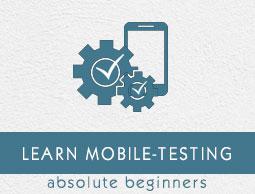Mobile Testing - Emulator Vs Simulator
One thing is self-explanatory in case of mobile testing. To perform mobile testing, you need a mobile device. This is to access that how our product will work and look like on a given mobile set.
Suppose we are developing an application for flight ticket booking system. Once the product is entirely developed, as a part of mobile testing, we need to check if the application is working as expected with all the majorly used devices like Android phones, iOS, Blackberry phones, and other different types of tablets and iPads.
To do this kind of check, we need to acquire each such device and then we can check if the application behaves as per expectation. Yes you thought right, as a product owner one will defiantly find this very expensive to procure such a large number of mobile devices and carry out testing. So is there any smart alternate available?
The solution to this problem is to use Mobile Simulators and Mobile Emulators. These are primarily software programs designed to provide simulation for important features of a smartphone. They are very similar in nature, so sometimes, they are used interchangeably.
Let’s compare how testing on an Emulator/Simulator is different from testing on a real device −
|
Real Device |
Emulator / Simulator |
| Price |
Getting real devices will cost you a lot. |
It is almost free, we just need to download and install them |
| Processing Speed |
It has faster processing; however network latency may be normal. |
It is slower as compared to actual devices. It has observed less latency than real devices connected to the local network or in the cloud. |
| Debugging |
Debugging is not that easy. |
It provides step-by-step debugging of an application. Also, it provides an efficient way for capturing screenshots. |
| Web-app Testing |
Web applications can be tested in a normal way. |
Testing a web application is much easier. |
| Reliability |
Testing on a real device has a major advantage that it always gives accurate results. |
It cannot simulate all types of user interactions; hence it may lead to false results sometimes. So it scores low when it comes to reliability. |
A simulator/emulator cannot mimic the following features −
- Mobile device battery
- Mobile device’s camera
- Difficult to mimic interruptions like incoming calls and SMS.
- Not so much realistic simulation for mobile device memory usage.
Let us now understand more about mobile simulators and mobile emulators. There are specific differences between the two. The following table lists the major difference between a simulator and an emulator.
|
Emulator |
Simulator |
| What it mimics |
Mobile device software
Mobile device hardware
Mobile operating system
|
Internal behavior of the device.
It does not mimic hardware.
|
| How to get it |
It is generally provided by the device manufacturer. |
It is generally provided by the device manufacturer or some other company. |
| Internal structure |
It is written in machine-level assembly language. |
It is written in high-level language. |
| Debugging |
It is more suitable for debugging. |
It is not suitable for debugging purpose. |
| Performance |
Emulators are really slow. Emulating the actual hardware usually makes the software run slower than it would natively. |
Faster than emulators. |
| Example |
Google’s Android SDK |
Apple’s iOS Simulator |
So, what is the best choice for mobile testing? Best practice indicates that, while actual development is in progress, we should use an emulator or a simulator. Before finalizing the product, there should be a sanity check with chosen real devices. For example, there is a huge number of Android smartphone users, so the smart choice is to have a sanity check for the latest Android device and regression can be conducted over simulators.


